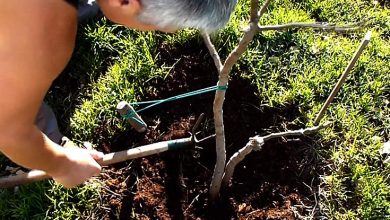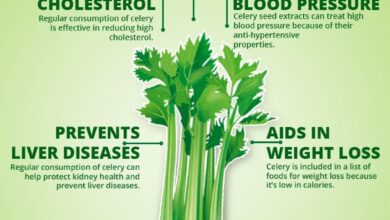Plant Bromeliads: [Care, Plantation, Place and Substrate]
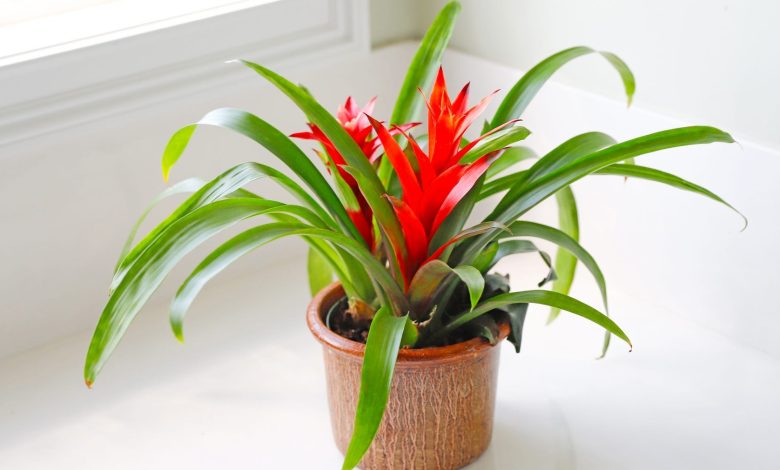
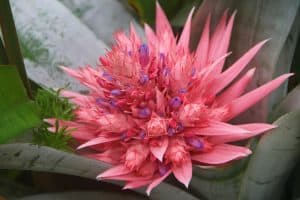 the bromeliads,coming from the Bromeliceae family, they are exotic plants native to Brazil (such as the trunks of Brazil, for example) whose flowers are unique, because they turn into tall spikes of truly dazzling colors, almost phosphorescent, that are born in the center of the plant, very fleshy, tubular and very bright foliage, of various shades.
the bromeliads,coming from the Bromeliceae family, they are exotic plants native to Brazil (such as the trunks of Brazil, for example) whose flowers are unique, because they turn into tall spikes of truly dazzling colors, almost phosphorescent, that are born in the center of the plant, very fleshy, tubular and very bright foliage, of various shades.
There are even some very curious mottled ones.
Actually, the flowering system of Bromeliads is very peculiar. They have very striking colors, from a bright red, through a pink, orange or fuchsia.
Characteristics of bromeliads
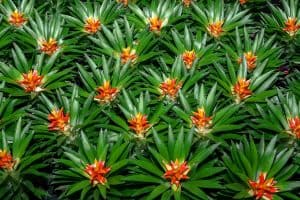 A special feature is that in the central area of the leaves, called bracts, it warns when the flower is approaching because it changes color. United, they offer a visual that is really as beautiful as it is striking because it is not a common flowering.
A special feature is that in the central area of the leaves, called bracts, it warns when the flower is approaching because it changes color. United, they offer a visual that is really as beautiful as it is striking because it is not a common flowering.
Another piece of good news is that flowering can last for several months, starting in spring, as long as the humidity and light conditions are suitable. This can also happen when grown indoors or indoors, as long as the minimum conditions it needs are reproduced.
It can also be used as an ornamental plant.
There are some varieties of Bromeliads that are easily adapted to live perched or attached to a trunk, a piece of wood or cork.
In reality they are called epiphytes, because they develop on the bark of trees, when they are in the wild, in the bowels of the Amazon rainforest in South America, where they develop under the protection and shelter of trees.
But this great capacity for adaptation also allows them to live inside a house. Of course, as long as certain minimum conditions are guaranteed.
Tank Bromeliads and Atmospheric Bromeliads
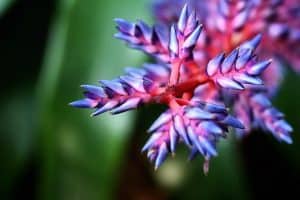 Other important types of bromeliads are tank bromeliads and atmospheric bromeliads.
Other important types of bromeliads are tank bromeliads and atmospheric bromeliads.
The former create an intricate structure of rosette-shaped leaves that are thick in such a way that they easily store water. That is why they support living in arid, dry areas.
The latter have a similar architecture, although they are thinner and remain erect. They can defend themselves from solar radiation with a special shine and do better in humid places.
The leaves, by the way, also have their own defense mechanisms against herbivores and vermin: they develop hairs or scales.
Temperature: Where to plant bromeliads?
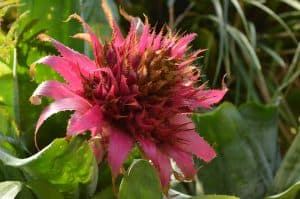 They withstand high temperatures, above 20°C, since they come from the tropics, from South American jungle regions, but it is important not to forget that they will do well as long as the environmental humidity is optimal.
They withstand high temperatures, above 20°C, since they come from the tropics, from South American jungle regions, but it is important not to forget that they will do well as long as the environmental humidity is optimal.
Precisely, this taste for heat, given its Tropical origin, does not allow it to withstand very low temperatures too much, much less frost in the winter period, so you must protect it very well and try to keep it at home at an average temperature of 20°C and good humidity.
However, as we have already said, this plant is very resistant and adaptable, because there are varieties that withstand low temperatures, so much so that they have managed to live in cold areas such as the Andes, withstanding, without negative consequences, temperatures of 10°C or a little less.
Light. What needs does the bromeliad have?
It needs to receive indirect light, so a covered terrace, a large balcony or a place under a lighted window will be good places for it to live inside a spacious pot, in a privileged place in your house where everyone will admire its exotic presence.
If the sun’s rays cover it for long periods of time, its beautiful leaves will dry up.
Substrate and Fertilizer: How do we prepare the land?
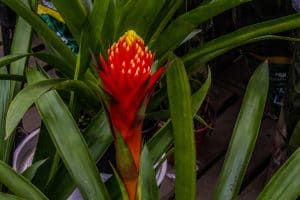 Bromeliad roots are also great.
Bromeliad roots are also great.
They have the incredible ability to attach very strongly to rocks or tree trunks and do not come off. That is the main function of the roots. The nutrients, therefore, are captured through the little hairs, hairs or trichomes, as you prefer to call them. This allows it to thrive in extreme environmental conditions.
On the other hand, bromeliads that live in the soil do act like any other normal plant and absorb all their nutrients in the usual way, with the help of their roots.
Thus, in reality the requirements at the substrate level are negligible and the fertilizer for it is not essential. It’s more. All you have to do is pour water into its calyx, in the center of the plant, for it to develop normally.
Irrigation: How and how often do we water bromeliads?
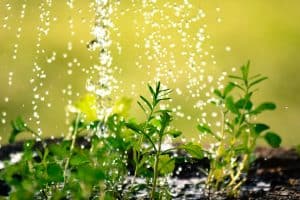 It should always be kept moist, but you should never flood it because you will lose it in a short time.
It should always be kept moist, but you should never flood it because you will lose it in a short time.
It just ensures that you always enjoy a humid environment, without allowing your soil to dry out and the bromeliad will grow without problems. The important thing is to maintain a balance in such a way that it prevents the roots from getting waterlogged or drying out, because in both extreme antagonistic cases the plant will die.
It needs water once a week and if the heat is very intense, with an unbearable summer of extremely high temperatures, then the irrigation dose can be doubled.
But the truth is that they are so intelligent that they know how to collect water and nutrients taken directly from the air, which is why they are able to reproduce their wild tropical habitat inside your own home.
Additionally, the use of a water sprayer is very prudent because Bromeliads like a lot of environmental humidity and spraying the leaves in this way will have excellent effects on their development and health.
The best way to treat it on a very hot day is to spray its leaves with water and that’s it! Because as already mentioned, the Bromeliad is self-sufficient.
Curiosities about bromeliads
There are more than three thousand species of bromeliads worldwide. And they are so resistant that they can be found at the top of an Amazonian tepui, as in xerophilous zones, or an Andean puna, as well as tropical forests.
Moreover, in the famous swamps of the state of Florida, in the United States, there are bromeliads.
A curious fact that few people know is that Ananas comosus is considered the most famous and important Bromeliad on the planet.
You know why? This variety produces a delicious citrus fruit:pineapple.
Another significant fact to share and admire is that they are divided according to the environment where they live. The Terrestrial, are those that are born and develop in the ground or on land. The Saxicolas or Rupícolas grow on rocks or stones and the Epiphytes are those that live happily on top of other plants.

![Photo of How to Plant Passion Flower in Your Garden: [Complete Guide]](https://www.complete-gardening.com/wp-content/uploads/2022/08/how-to-plant-passion-flower-in-your-garden-complete-guide-390x220.jpg)

